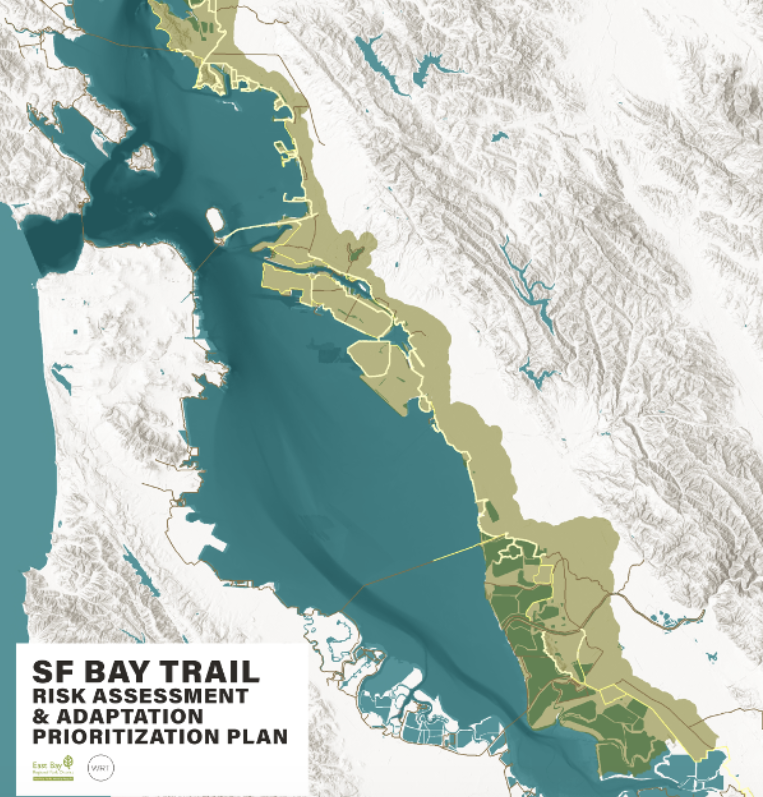As sea levels continue to rise across our nation and the globe, there is an urgent need for communities along coasts and shorelines to adapt to create greater social, economic, and ecological resilience. But what entity is responsible for making the shoreline resilient and what methods should be implemented?
The Future Climate: Rising to the Challenge

Recently, WRT, along with the East Bay Regional Park District and the San Francisco Estuary Institute, were invited to join Greenbelt Alliance in an open discussion about the coordinated regional resilience effort required to protect both communities and ecosystems along the East Bay shoreline. WRT was represented by Principal John Gibbs, ASLA, LEED AP, and resiliency planning expert Cristina Bejarano, AICP, ASLA, LEED AP.
“Our values align with the mission of Greenbelt Alliance. My involvement as a member of the board has been an exciting opportunity, but also a very natural fit for me and the work we do within our practice,” says John Gibbs.
“We are fortunate to work alongside Greenbelt Alliance in supporting their mission educating, advocating, and collaborating to think strategically and plan for the future through the lens of climate change and resilience. I believe in this work and feel fortunate for the opportunity to join other like-minded individuals on the board to move this cause forward.”

During the webinar, John and Cristina discuss resiliency planning through the lens of one of WRT’s ongoing projects, the San Francisco Bay Trail Risk Assessment and Adaptation Prioritization Plan. John and Cristina dive into the importance of not just planning, but science, engineering, economic and partnership strategies that are vital to improving resilience in higher-risk areas. Cristina outlines some of the goals of the project, which include mitigating and preparing for coastal hazards, improving public access, establishing strategic partnerships, and assessing ecological impacts of sea-level rise in three specific focus areas. Finally, John examines Eastshore State Park, considering the need to expand public access as sea-levels continue to rise and the importance of looking back in time to see where we were and where we are now.
The entire webinar discussion can be listened to here.